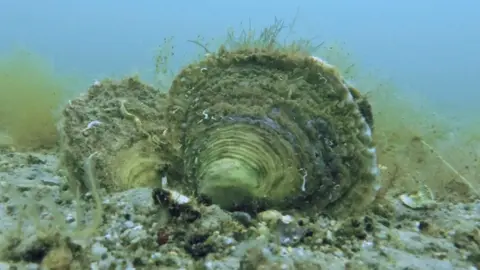Native oyster reefs once common say researchers
 Stephane Pouvreau
Stephane PouvreauResearchers have discovered that reefs of native flat oysters once thrived along Europe's coastline.
A study by the University of Exeter and University of Edinburgh showed the reefs of European flat oysters were mostly destroyed more than 100 years ago by dredging and over-fishing.
In many places the Pacific oyster, also known as the rock oyster, has taken their place.
Researchers, who found evidence of former reefs from Norway to the Mediterranean, have called for more work to restore the flat oyster reefs.

Limited dredging of native oysters still exists on the River Fal in Cornwall, but according to the study, native flat oysters are now mostly found as scattered individuals.
Dr Ruth Thurstan, from the University of Exeter's team, based at Penryn in Cornwall, said native oyster reefs were an important habitat for other sealife and also filter water.
Restoration projects such as the Wild Oyster Project were under way across Europe which she said were "stepping stones to the return of these vital ecosystems on an international scale".
She said that few people in the UK would have have seen a native flat oyster.
"Oysters still exist in these waters but they’re scattered, and the reefs they built are gone," she said.
"We tend to think of our seafloor as a flat, muddy expanse, but in the past many locations were a three-dimensional landscape of complex living reefs – now completely lost from our collective memory."
Follow BBC Cornwall on X (formerly Twitter), Facebook and Instagram. Send your story ideas to [email protected].
